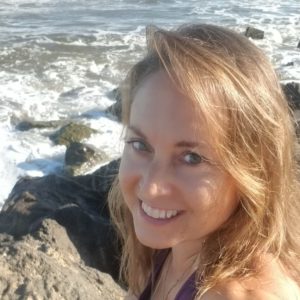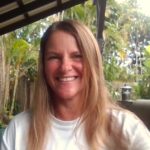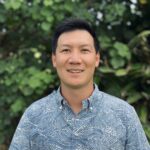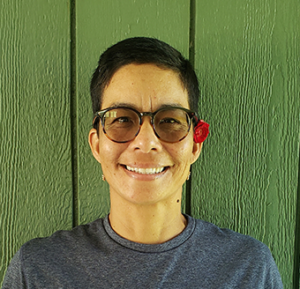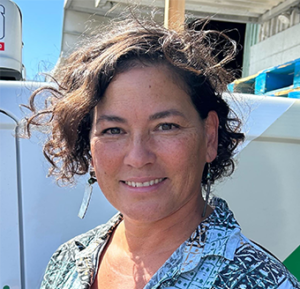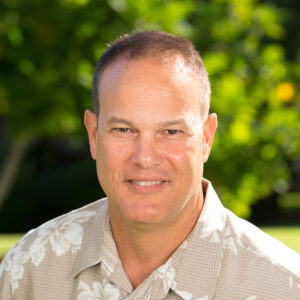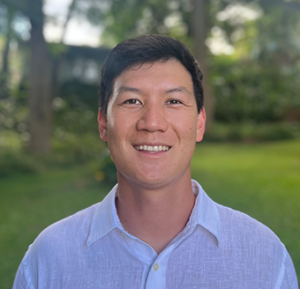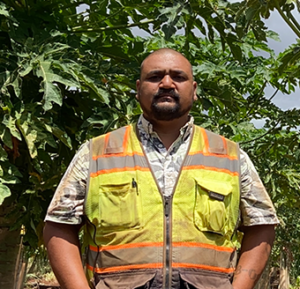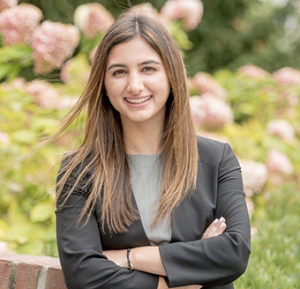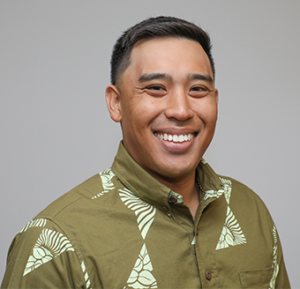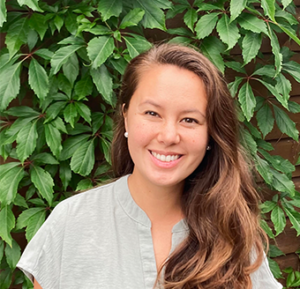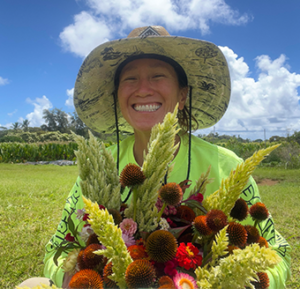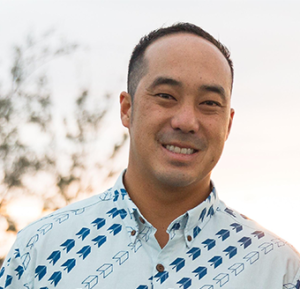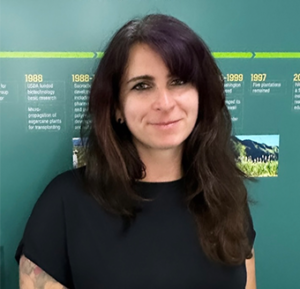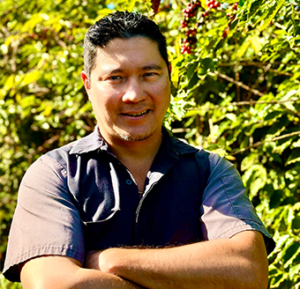Our last day for our travel seminar was bittersweet- not just because it would be our last day all together, but because our first stop was to Maui Ku’ia Estate Chocolate Farm!
We departed from our hotel for the beautiful costal drive to first meet David McPherson, Farm Manager of Maui Ku’ia Estate Chocolate. As we drove to follow David from the main road through the scrubland, we were stunned to see a beautiful oasis in the middle. David told us quite a bit about the history of this land. It had been sugarcane up until 1999 and was part of Kamehameha Schools, but in 2013, they began planting cacao. Working with Dan, who we were told was a plan genius, Ku’ia chocolate has flourished to have over 6,000 trees.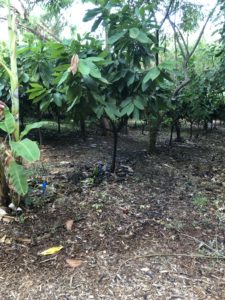
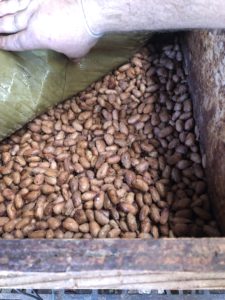
David let us know that prior to the fire in 2018, the farm had up to 8,000 trees, and they would soon be there again! As we trekked through the farmland, David showed us the many varieties of cacao, and let us view his fermentation chamber. The fermentation processes and the drying process were critical to a good flavor profile. We spent so long with David, that were were late to the chocolate tasting (CHOCOLATE TASTING!!!) with Gunnars Valkirs, CEO, whose passion and love for chocolate birthed Ku’ia Chocolate.
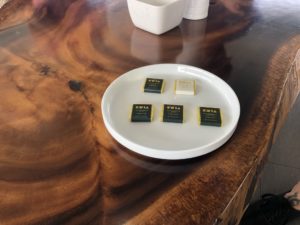
Gunners let us sample 5 varieties of his chocolate, as he talked to us about the thing that makes his chocolate so unique: stress. The stress of the volcanic soil gave Ku’ia chocolate its complex flavor profile. (Stress was actually brought up at Maui Wine too- grapes love it. Glad it is good for something!) We watched a video of the chocolate making process as we continued to sample what was literally the best chocolate this blogger has had in her life. We of course stopped by the gift stop to bring some home for our loved ones. YUM!!

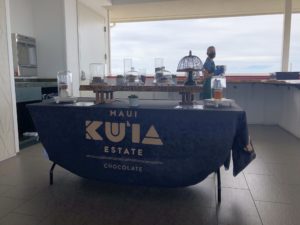
Soon we departed with sights set on Noho‘ano Farm in Waikapū. We met with Caretaker Hōkūao Pellegrino, who walked us through the beautiful and rich history of this piece of aina. Born and raised a son of this land, Hōkūao connected with this aina through his father’s side- a love of cooking, gardening, growing, and producing their own food. Though historically kalo had been grown here, Hōkūao told us that when he began work, the walls were under a forest of hau. His vision was to restore it to the kalo it once had been. But it was not just about the kalo. He wanted to grow food, engage the community, and educate. In mid-July 2004, Hōkūao rallied the community: 131 family and community members, and kalo farmers from all around came to restore the kalo patch. By 11 AM, Hōkūao heard someone say “the water is coming”, and the original water flow was restored. Unlike other farming methods, this water that feeds the kalo returned to the stream. Then the next day, kalo was being planted. The walls were restored using traditional architecture.
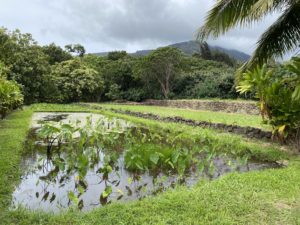
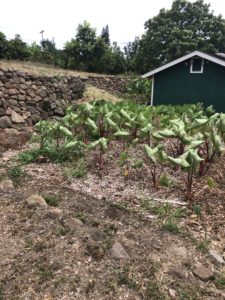
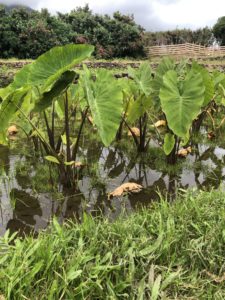
Over time and with more work, more streams were opened and flowing again. Thanks to the work of the community, the stream, which once was down to 6%, was capable of flowing at 71%. Now Hōkūao grows 40 Hawaiian cultivars of kalo, with kumu ulaula, mana eleele, and piko kea among the most successful. With the grants received for food sustainability and the CARES act, he was able to purchase food equipment, including the last commercial poi mill in the State. He was also able to hire Hawaiian and local staff who lost jobs during the pandemic, and trained them to grow and cook. Hōkūao said that the certified kitchen is coming- he’s hoping to break ground later this year. Hōkūao envisions a community driven farm, growing kalo and ‘ulu, education of traditional farming methods, and expanding the palates of people to appreciate all that made. In 2020, Noho’ano farm produced 1,200 lbs of poi- which was given away to the community.
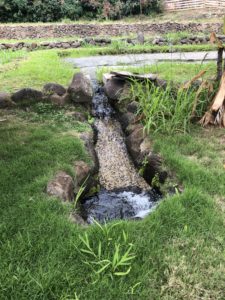
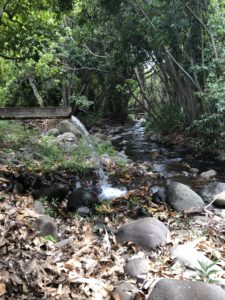
Before we departed, Hōkūao left us with the words from his father: No Farmer bends down any lower than the next. Remain humble, every farmer works hard.

With Hōkūao’s words still with us, we took one final journey to central Maui to Mahi Pono, where we met with Project Manager Darren Strand and enjoyed a brief talk story and lunch before heading out into the fields.
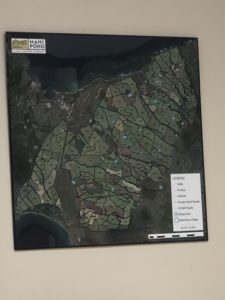
On 41,000 acres of what was one HC&S sugarcane, Mahi Pono intends to diversify the land’s agriculture. Mahi Pono has already planted acres of trees, including citrus (lemons, limes, oranges, and tangerines) papaya, coffee, mac nut, ‘ulu, and avocado, with of course plans for more in the future. Row crops, including watermelon, broccoli, onion, potato, carrot, green beans, and kale are also being grown. While 41,000 acres is a lot of planning, they have shared their plan with an interactive map. Mahi Pono currently has about 200 employees, with projections to be employing 400-500 regular employees, plus more to harvest seasonally.
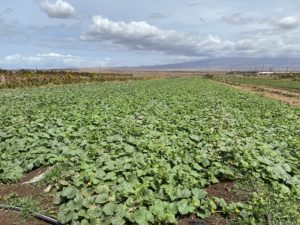
One question we couldn’t wait to ask was “what on earth do you do for the deer?” Deer had been a theme during our farm visits as being the most aggressive and destructive pest on Maui. We learned that $2.5 million had been spent on 8-foot high deer fence. The lots were divided and populations were estimated. Where the concentration was high and planting was needed, an eradication program began. The first approach was to understand where the populations were, and to keep them in their section. A mobile slaughter house was brought in to be able to process the meat. Hunting was allowed in areas that were not in production as well. Not all areas had fences- the deer didn’t seem to like the citrus, for example (but they love coffee!) Pigs have also been an issue, as they like to dig up the dirt for water. It has been about 6-7 months since the program stopped, and the pig population has once again been growing, meaning the program will likely start up again.
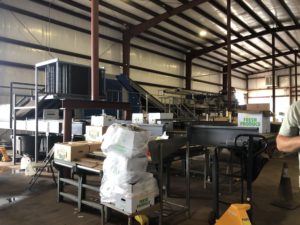
One of our first stops was the potato building. An entire potato processing line was housed here. Of course we know that most of our potatoes come from the mainland, and because of this, mainland potatoes are treated with a chemical to reduce sprouting. Mahi Pono wanted to avoid that, and after the first batch decided to go ahead and sprout anyway, they decided to use rosemary oil to prevent the sprouting. We also watched as the beans were being washed. Darren said that the beans, while labor intensive, are a great rotation crop and they always sell. Before leaving the potato building, we saw some harvested watermelons, and we were able to sample their sweet, sweet, innards. We then enjoyed a a scenic tour to view various fields of citrus, melons, beans, mac nut, and kale, as well as view the different plants used as windbreaks, such as sorghum, Gliricidia, and bana grass. One of our last stops was the 75 acres that has been set aside for community members. So far about 14 acres have been used, with plans to finish leasing out the rest.
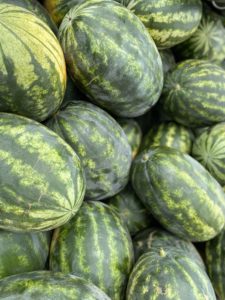
After Mahi Pono, it was time to say goodbye. We went to the airport, shared a few last memories, and boarded our respective planes. We hope to all see each other again at our graduation in November!!

